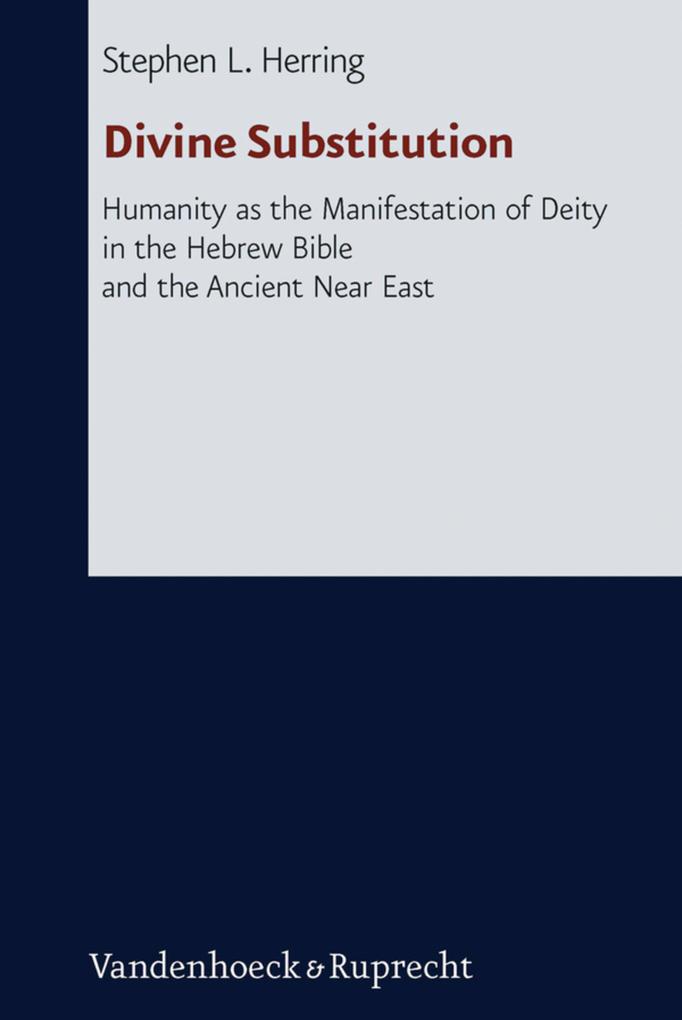Divine Substitution is an investigation of ancient conceptualizations of divine presence. Specifically, this thesis investigates the possibility that the ancient Mesopotamian conceptualization of cultic and royal statues, thought to actually manifest the presence of gods and kings, can likewise be found in ancient Israel. Despite the overly pessimistic view of the later biblical authors, material objects were almost certainly believed to extend and manifest the presence of God in pre-exilic Israel (e. g. , standing stones). Likewise, the later polemics against such cultic concepts demonstrate Israel's familiarity with this type of conceptualization. These polemics engaged in the rhetoric of mutilation and destruction of cultic representations, the erasure and re-inscription of divine names, and the rhetorical deconstruction of the specific Mesopotamian rituals thought to transform the dead statue into a living god. Though the biblical reflection of these concepts is more often found in the negative commentary regarding "foreign" cultic practices, S. Herring demonstrates that these opinions were not universally held. At least three biblical texts (Gen 1:26f. ; Ex 34:29-34; and Ezek 36-37) portray the conceptualization that material images could manifest the divine presence in positive terms. Yet, these positive attestations were limited to a certain type of material image - humans.
Inhaltsverzeichnis
1;Cover ;1 2;Title Page;4 3;Copyright;5 4;Table of Contents;6 5;Body;10 6;Abstract;10 7;Acknowledgments;12 8;1. Introduction: Representation and the Real;14 8.1;1.1 Summary and Outline;14 8.2;1.2 Cultic Images and Semiotics in Biblical and Ancient Near Eastern Studies;15 8.2.1;1.2.2 Methodological Notes;22 9;2. Image and Presence in Mesopotamia;26 9.1;2.1 Introduction;26 9.2;2.2 Images and Presence in Mesopotamia;27 9.2.1;2.2.1 Mis pî/ pit pî Ritual;27 9.2.2;2.2.2 Divine Abandonment and Abduction;30 9.2.3;2.2.3 Images of Humans;32 9.3;2.3 Humans as the Image of God in Mesopotamia;38 9.3.1;2.3.1 King as Image;39 9.3.2;2.3.2 Priest as Image;45 9.4;2.4 Conclusion;48 10;3. Iconic Israel: Divine Representation, Idol Polemics, and the Awareness of the Relationship between Image and Presence in the Hebrew Bible;50 10.1;3.1 Introduction;50 10.2;3.2 Representation in the Israelite Cult;50 10.2.1;3.2.1 High Place Worship;55 10.2.2;3.2.2 Standing Stones;57 10.2.3;3.2.3 Asherah;64 10.2.4;3.2.4 The Ark;68 10.3;3.3 Iconoclasm;75 10.3.1;3.3.1 Hosea and the Deuteronomistic Reform Movement;75 10.3.2;3.3.2 Prophetic Parodies;78 10.4;3.4 Conclusion;85 11;4. The Image of God in the Hebrew Bible;88 11.1;4.1 Genesis 1: Humanity as the Image of God;88 11.1.1;4.1.1 Introduction;88 11.1.2;4.1.2 History of Research;88 11.1.2.1;4.1.2.1 History of Scholarship before 1960;89 11.1.2.2;4.1.2.2 History of Scholarship After 1960;93 11.1.3;4.1.3 ~yhla ~lcb;97 11.1.3.1;4.1.3.1 Near Eastern Background of Genesis 1;97 11.1.3.2;4.1.3.2 Genesis 1:2627;106 11.1.3.3;4.1.3.3 Genesis 5:3 and 9:6;122 11.1.4;4.1.4 Conclusion;125 11.2;4.2 Exodus 34:2935: Moses as the Image of God;128 11.2.1;4.2.1 Introduction;128 11.2.1.1;4.2.1.1 The Priestly Redaction and Literary Arrangement of Exodus;129 11.2.1.2;4.2.1.2 Exodus 34:2935 and the Priestly Redaction of Exodus 3234;134 11.2.2;4.2.2 Divine Representation in Exodus 3234;139 11.2.2.1;4.2.2.1 Introduction;139 11.2.2.2;4.2.2.2 The Calf as Image of God;140 11.2.2.3;4.2
.2.3 The Calf as Image of YHWH;146 11.2.2.4;4.2.2.4 Moses as Image of God in Exodus 3234;151 11.2.2.5;4.2.2.5 Moses as Image of God in the Book of Exodus;158 11.2.3;4.2.3 Conclusion;163 11.3;4.3 Ezekiel 3637: Israel as the Image of God;165 11.3.1;4.3.1 Introduction;165 11.3.1.1;4.3.1.1 Composition;166 11.3.1.2;4.3.1.2 Setting;172 11.3.1.3;4.3.1.3 Mesopotamian Background and Influence;174 11.3.2;4.3.2 Israel as YHWH's Image in Ezekiel;182 11.3.2.1;4.3.2.1 Images of Idolatry in Ezekiel;184 11.3.2.2;4.3.2.2 Images of Restoration in Ezekiel;194 11.3.2.2.1;4.3.2.2.1 Spirit in Ezekiel;202 11.3.3;4.3.5 Conclusion;208 12;5. Conclusions;210 12.1;5.1 Summaries and Conclusions;210 12.2;5.2 The Concept in Later Judaism;217 13;Abbreviations;220 14;Bibliography;224 15;Back Cover ;246










